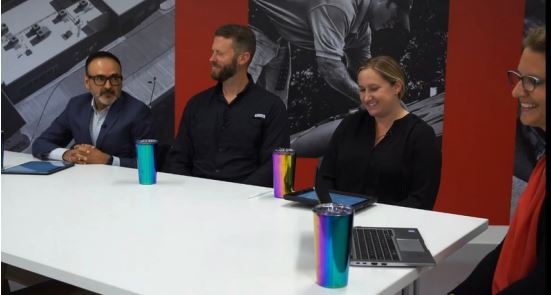Getting multiple professionals involved in a commercial roofing project offers a way to capture different perspectives—and to shine a light on some of the industry's hidden complexities—especially when it comes to challenging details like parapet walls.
GAF Director of Building and Roofing Sciences Jennifer Keegan brought together a discussion team comprising a roofing contractor, a roof consultant, and an architect to examine and explore the challenges parapets pose in building design. These seemingly simple elements of a building—a parapet is essentially where the roof meets the wall—aren't in reality so straightforward and Keegan describes them as being complex areas "where building aesthetics meet performance."
Parapet walls are integral to air and moisture management, energy efficiency, construction trade sequencing, and operational maintenance, Keegan notes. And all are essential for the building's performance, making strong communication between all the parties involved in the project crucial to the prevention of future issues.
We're All on the Same Team
At the end of the day, everyone working on a project wants a satisfied customer and a building that will perform for years to come. The question is how to get there.
Understanding the Challenges
Throughout a project, key contributors may butt heads. It's important to understand each other's perspectives and challenges to overcome siloed communication and function as a cohesive team.
- Performance and design. From the architect's perspective, one of the biggest challenges is meeting a design vision without jeopardizing performance. The goal being to make functional elements essentially invisible to the naked eye but still have them perform well (keeping the building watertight, etc.).
- During roof replacements. Building Envelope Consultant Caitlin Maggiano notes that the toughest challenges she faces regarding parapets arise from unforeseen conditions. For example, removing an old roof sometimes reveals a mess of crumbling masonry or rotted wood underneath. She emphasizes how crucial communication is as these conditions are discovered. In such cases, the challenge then becomes structural stability along with repairs to ensure the building offers moisture mitigation and air control.
- Watertightness. Whether working on a roof replacement or a new construction project, Jay Smith, former contractor and current GAF CARE trainer says his top concern is how watertight the system is at the wall—a feat that requires outstanding communication and coordination between all parties on the job: "We want to make sure we are there on time and that all parts of the job are made watertight," he explains.
Getting Ahead of the Unexpected
In order to identify any potential issues that may affect performance, Smith says he makes sure he's on the job even before it's ready for the roofing system. GAF Care Trainer James Willits shared how, for instance, a simple issue of a window being installed on a wall a little lower than specified can lead to big problems later on—such as making it more difficult to achieve the proper slope from the wall to the drain and meet the required 8-inch flashing height. When this happens, the roofing team needs to get creative with tapered insulation to ensure that water can properly flow toward the roof drain.
Willits continues with the example of a typical expansion joint where two walls come together and terminate into the parapet wall. This requires real trade coordination—one trade does the steel deck, another does the wood or masonry work on the wall, and then the roofing contractor comes in to make everything watertight. Strong communication throughout the process keeps everyone aligned so that the building can hold out against the threat of water and air infiltration.
This need for alignment is precisely why Smith gets involved in the job as early as possible: "I'm pulling measurements from my set of plans that I have and making sure everything's matching up—and, if anything doesn't, that's when I start shooting out emails and phone calls and going back into the job trailer [to] figure out where things went a little bit differently."
Staying in Touch
Communication between all parties throughout a project puts potential problems under a continual, multidisciplinary spotlight that helps a team to catch them as early as possible—even at the design stage. For example, it's important to consider the constructability of the design and anticipate issues that may arise during construction. In such cases, mockups can be used to make it easier to identify possible issues before a project starts, says Smith. He encourages architects to specify mockups in the project documents. That way, when the roof is installed, a team can feel confident that it will perform the way it was designed to.
Design Support When You Need It
When a challenging design results in even more challenging roofing details, you don't have to go it alone. Learn more about how the experts at GAF are available to offer assistance and support with designing custom tapered systems, identifying sustainable products, understanding codes and approvals, and everything in between.

